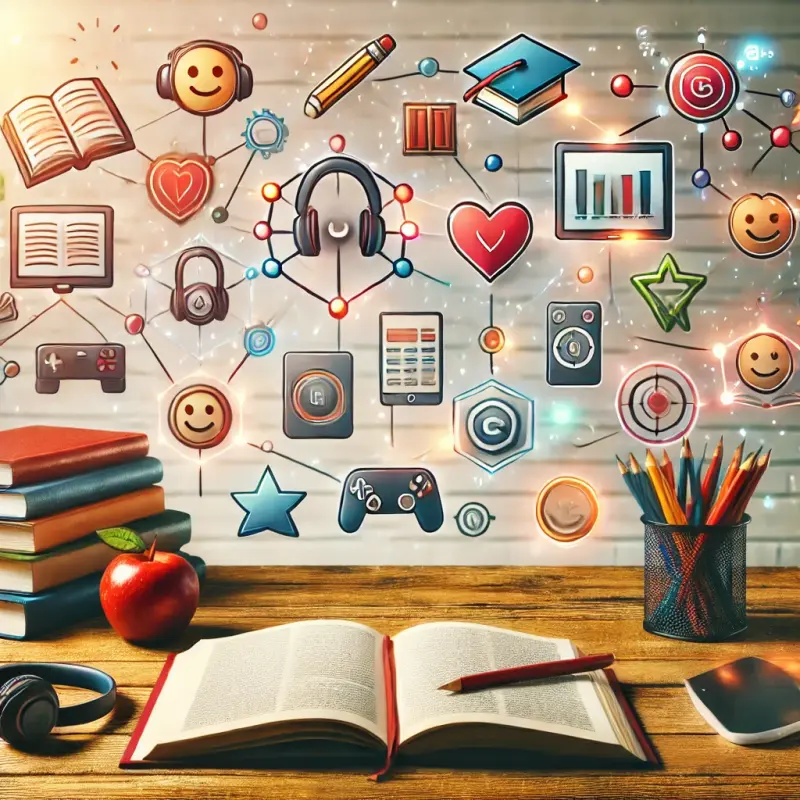Gamification in Education: Learning Through Play
As the digital landscape transforms, educational methods are also evolving to adapt to new, interactive ways of teaching. Gamification, the practice of incorporating game-like elements into educational activities, has become an increasingly popular approach to enhance student motivation, engagement, and retention. In this article, we’ll explore the foundations of gamification, its benefits in educational settings, various gamified learning strategies, and practical examples of its application in both online and traditional classrooms.

Understanding Gamification in Education
Gamification in education isn’t about turning classrooms into video games; rather, it uses specific game design elements to enhance the learning experience. These elements, which may include point-scoring, level progression, and interactive challenges, aim to make learning experiences more enjoyable and immersive. By applying such mechanics, educators can create a dynamic learning environment where students feel more motivated and are encouraged to achieve incremental learning goals.
This concept is grounded in psychology, particularly in theories of motivation. Games trigger the brain’s reward system, releasing dopamine, which is associated with feelings of pleasure and achievement. When applied thoughtfully, gamification can help students focus better, stay motivated, and even improve memory retention.
Benefits of Gamification in Education
-
Increased Engagement
Gamification makes learning more interactive, which helps capture students’ attention. When students feel actively involved, they are more likely to stay focused on the material. -
Enhanced Motivation
By rewarding students through badges, points, or progress bars, gamified learning provides a sense of achievement. Small wins keep students motivated and encourage them to continue progressing. -
Improved Knowledge Retention
Learning through interactive activities can improve knowledge retention. Gamification often requires students to recall information to progress, reinforcing learning in the process. -
Immediate Feedback
Gamified platforms often provide instant feedback, which is crucial in learning. Immediate feedback helps students understand mistakes right away and learn how to correct them. -
Promotes Collaboration and Competition
Many gamified learning tools encourage students to work in teams or compete in a friendly manner, which can help improve social skills and build camaraderie.
Key Elements of Gamification in Learning
To effectively implement gamification, it is essential to understand which game elements can be integrated into educational settings. Here are some core elements that contribute to successful gamified learning:
-
Points and Badges
Points and badges reward students for completing tasks, quizzes, or projects. These rewards encourage continued effort, celebrating every small achievement and allowing students to accumulate visible progress over time. -
Levels and Challenges
Level-based progression adds structure to learning, where each level represents a more advanced stage of the subject matter. Challenges within each level provide students with meaningful and attainable goals. -
Leaderboards
Leaderboards introduce a sense of competition, which can be motivational. By seeing their standings, students may feel inspired to improve their performance. -
Quests and Missions
Structured learning can be presented as a journey with quests or missions. Each mission represents a set of tasks or lessons, making the learning process feel like an adventure.
Practical Gamification Strategies in Education
-
Digital Learning Platforms with Gamified Features
Various educational apps and platforms, like Kahoot, Quizizz, and Classcraft, incorporate game-based elements. These tools offer quizzes, rewards, and leaderboards that help make learning fun and interactive. -
Implementing a Points System for Classroom Activities
Teachers can implement a simple points system, awarding points for class participation, homework completion, or extra-curricular activities. These points can be exchanged for classroom privileges or other rewards. -
Creating Story-Driven Learning Experiences
By framing learning topics as story-based missions or adventures, educators can make the learning experience feel like a role-playing game. Each lesson becomes a chapter, and students advance through the story as they learn. -
Gamified Homework and Quizzes
Online quizzes and assignments that reward students with instant feedback or points can enhance the learning process. Such tools can be used for a variety of subjects, from vocabulary building in language classes to problem-solving in math. -
Using Simulations for Real-Life Problem Solving
Simulations are highly effective in subjects like science, economics, and social studies, allowing students to experience and solve real-life problems in a controlled, risk-free environment.
Challenges of Gamification in Education
While gamification has many advantages, implementing it in a balanced way can be challenging:
-
Avoiding Over-Competition
Too much focus on competition can demotivate some students. Educators should encourage students to focus on individual progress and improvement rather than only outperforming peers. -
Ensuring Learning Remains Central
While gamification adds excitement, it should not overshadow the educational content. The primary goal should always be learning, with game mechanics serving as a support tool rather than the core focus. -
Balancing Rewards
Offering too many rewards can lead to a dependency on external validation. To counter this, rewards should be spaced out and balanced with intrinsic motivational tactics, like encouraging curiosity and a love for learning.
Real-Life Examples of Gamification in Education
-
Duolingo: This popular language-learning app uses a range of gamification techniques, from levels and badges to daily challenges, keeping users engaged while learning new languages.
-
Minecraft Education Edition: Minecraft’s education version enables students to learn subjects like math, history, and science through interactive gameplay. The platform allows teachers to create custom lessons using Minecraft’s world-building mechanics.
-
ClassDojo: This classroom management app rewards students for positive behavior and task completion. Teachers can assign points to encourage good habits, helping students visualize their progress and behavior.
Conclusion
Gamification has demonstrated impressive potential for improving engagement, motivation, and knowledge retention in educational settings. As digital technology continues to evolve, the range of gamified tools and strategies available to educators will also expand, opening new doors for innovative, student-centered learning. By thoughtfully integrating game elements into educational practices, teachers can create a learning environment that is not only enjoyable but also highly effective in fostering a love for learning.
Artykuły
Zapisz się na nasze powiadomienia, aby regularnie otrzymywać najciekawsze treści prosto do swojej skrzynki pocztowej!